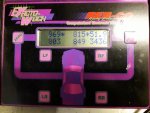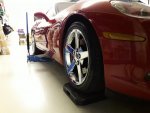Forrest Gump
CCCUK regional rep
The front to rear weight distribution of a C3 Corvette is known to be one of its good design features. I think I've read it is in the order of 48% front to 52% rear for a small block car.
I'm curious to know what the side to side weight balance might be? There appears to much more clobber on the drivers side - alternator, steering gear and p/s, brake servo + cylinder, pedals, battery. (Why was the battery not put on the passenger side?). Given the car may often only have the driver in it, this weight distribution doesn't look so clever.
It was only recently that I realised the engine and gearbox is not actually positioned in the centre of the car - it is about two inches offset to the passenger side. Was this just "packaging" or an attempt to balance the cars weight side to side, in which case the balance might be quite even.
Has anyone who's had their car on scales got any figures on this?
I'm curious to know what the side to side weight balance might be? There appears to much more clobber on the drivers side - alternator, steering gear and p/s, brake servo + cylinder, pedals, battery. (Why was the battery not put on the passenger side?). Given the car may often only have the driver in it, this weight distribution doesn't look so clever.
It was only recently that I realised the engine and gearbox is not actually positioned in the centre of the car - it is about two inches offset to the passenger side. Was this just "packaging" or an attempt to balance the cars weight side to side, in which case the balance might be quite even.
Has anyone who's had their car on scales got any figures on this?


